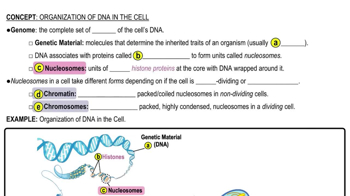Textbook Question
Mitosis .a. occurs only in cancerous cells;b. occurs only in skin cells;c. produces daughter cells that are exact genetic copies of the parent cell;d. results in the production of three different cells
1678
views
 Verified step by step guidance
Verified step by step guidance Verified video answer for a similar problem:
Verified video answer for a similar problem:



 9:40m
9:40mMaster Introduction to Cell Division with a bite sized video explanation from Bruce Bryan
Start learning